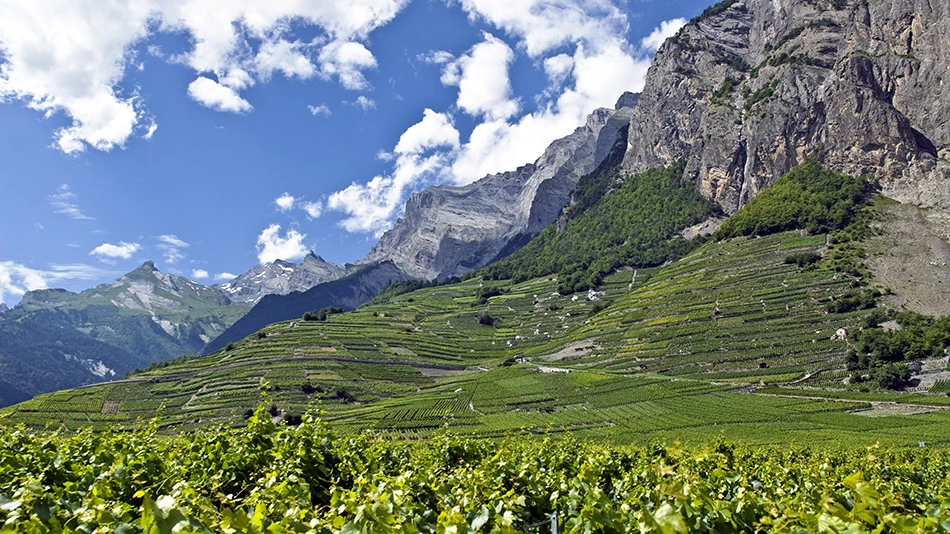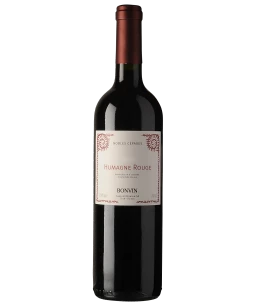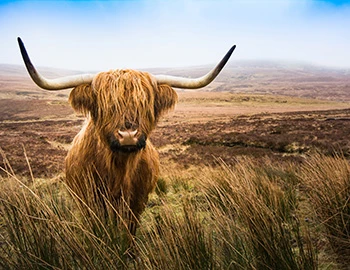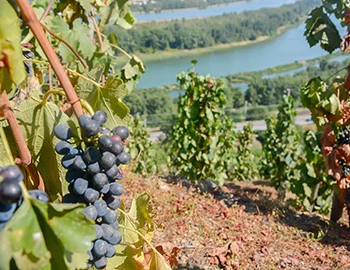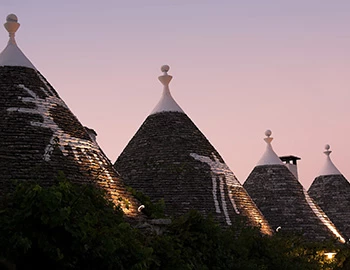Wallis
Valais: Alpine wines with class
More than 20 varieties of grapes can yield wines in Valais that are full of character. A large number of them grow on spectacular, steep slopes. Sealed off by mighty chains of mountains, old plantings like Petite Arvine, Amigne and Cornalin have survived in Valais, and today they are highly sought-after by wine enthusiasts. The highest vineyards in Europe are also found in Valais: the Savignin vines (known here as “Heida”), rooted in the mountain community of Visperterminen.
White wines from Wallis
Rosé wines from Wallis
Red wines from Wallis
Farmers in Valais have always had to be inventive to cultivate fruits and wine. By the late middle ages, they had already established a highly complex network of “suonen”, irrigation channels that bring the water from mountain streams across several kilometres to the agricultural land in the valley. Without the mountain water, the valley, with its low levels of rainfall, could never have developed into Switzerland’s most important wine-growing region. Even today, with a vineyard area of 5,100 hectares, Valais is the undisputed largest wine-growing canton in Switzerland.
Specialties on the rise
As in other wine regions, an existential crisis was the catalyst for the quality boom. In 1983, a large harvest led to a dramatic drop in prices. From then on, the focus was set on quality. Thirty years ago, Chasselas, Gamay and Pinot Noir still dominated the range of grape varieties, with a share of well over 90 percent. Today, it is the specialties that shape the image of Valais. Syrah also plays a special role, through which Valais defines itself as a part of the Rhône wine culture to which well-known regions in France, such as Hermitage or Côte Rôtie also belong.
Shaped by glaciers
The formation of the Alps and the Rhône glacier have produced a highly complex wine-growing terroir in Valais. Moraine and slate soils predominate, with more active lime found in the upper part of the valley, with mainly granite in lower Valais. In the tributaries of the Rhône, gravel prevails. The climate is considered relatively warm and low in precipitation. (600 to 800 millimetres of rain per year per square metre). In the steep slopes, terraces are held in place by dry stone walls, with a total length of over 3,000 kilometres; some of these walls are up to 30 metres high.
Every village has its specialty
Various Valais winegrowing communities are considered strongholds for very specific varieties. Thus, Salgesh can be distinguished by its Pinot Noir, while Vétroz is seen as the home of the Amigne; splendid Petite Arvine wines result from Fully; and Chamoson plays out the class of the Sylvaner (known here as “Johannisberg”). But French varieties, too, like Marsanne, Merlot or Cabernet Sauvingon yield impressive wines in prime locations.
